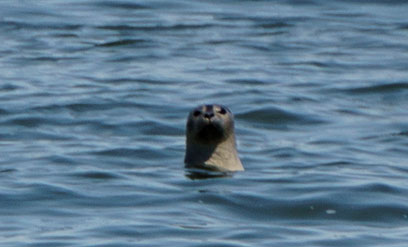That seals it!
More adorable sea-faring mammals are flocking to the waters off Coney Island thanks to cleaner water and better wildlife protection, according to an expert on the flippered furballs.
“They’ve been coming in greater and greater amounts,” said Paul Sieswerda, a former curator for the New York Aquarium and founder of sea mammal advocacy group Gotham Whale.
The itinerant pinnipedia hail from New England and spend their winters soaking in sun on Swineburne Island — a man-made outcropping off the coast of Sea Gate that was once used to quarantine sick immigrants. Now the former convalescent colony is a symbol of the harbor’s improving health — more seals packed onto on the football field-sized island this year than in the last decade Sieswerda has been counting, he said.
“We saw a maximum this year on Swinburne of 80 seals,” said Sieswerda, who tallied a little more than 60 last year. “That’s a pretty full house for the space available for them.”
Sieswerda credits the resurgence to stronger environmental regulation in the Hudson River and stricter caps imposed in 2012 on fishing Menhaden — a favorite snack of seals.
Of course, the seals still have to beat other area wildlife to the seafood buffet, an area skipper said.
“Cormorants are a double-edged sword, because they are very good birds for the environment, but at the same time, they eat a tremendous amount of fish,” said Kingsborough Community College maritime technology teacher and boat captain John Nappo, who took this paper out for a spin in the Lower Bay last month.
The cute critters — mostly harbor seals from Massachusetts and Maine — make their way down south for the winter starting around November and stay until the end of April, when they swim back up north to colder waters, Sieswerda said.
The seals’ growing numbers could also attract some unwanted wildlife. Fin-watchers are reporting more great white sharks off of the coast of Cape Cod, where the seals spend their summers. But Sieswerda cautioned against panic — much like the Mayor in “Jaws” — and said the local seal population hasn’t grown large enough to attract the bloodthirsty behemoths.
“When there are more prey items, the predators come around,” he said. “But there is no real danger now. I wouldn’t want to sensationalize the idea that because there are seals, now sharks are coming — but that’s what happened up in Massachusetts.”


















